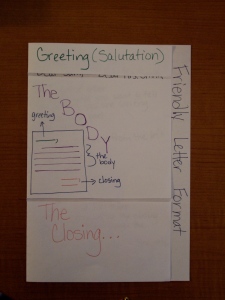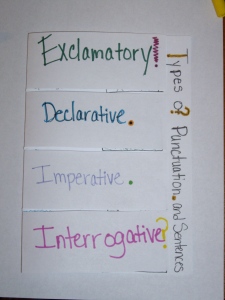Holiday Letter
As part of my continuing attempt to create authentic writing experiences for my students, I had my students write a holiday letter and mail it to a person of their choice. There were many benefits and lessons to be learned here – friendly-letter format, summarization (milestones of their year), what a full address is, addressing an envelope, and the purpose of a holiday letter.
Here is what I discovered. Even though my students are in middle school, most of them don’t know what constitutes a full address, they don’t know how to address an envelope, they have difficulties coming up with things to write about, and they were completely amazed that I was going to mail their letters.
We started by creating a foldable for friendly letters. They needed to know the format before they could write an appropriate letter. I created a powerpoint that broke the letter into three parts. You can view and download the powerpoint here: http://www.slideboom.com/presentations/36868/Friendly-Letter
This is what their foldable looked like:

Outside of foldable

Inside the foldable
We stapled these into their spirals so that they could reference them, both for the holiday letter and their epals e-mails.
After they made their foldable, we started talking specifically about holiday letters and their purpose. I brought several examples for them to peruse. I prepared a powerpoint that shared topics, mood, and overall purpose for the letter. This seemed to help several of my students decide on topics and the type of letter that they wanted to write. You can view and download the powerpoint here: http://www.slideboom.com/presentations/36907/Holiday-Letter
They finally started writing their letters. I created a basic letter format that they would copy their final draft onto. It had some generic pictures and text boxes on it. It wasn’t that big, so they didn’t have to write a lot of information. This was actually a good thing, because some of them really struggled with things to write about.
Here is what I would change next time: I would give them more time to work on the project. Some students struggled getting all of their information written, edited, and their envelop addressed. I also need to work further on editing skills. It is something that they are not proficient at. I do feel, however, that this was a very worthwhile project and will probably expand it a little and repeat it next year.




